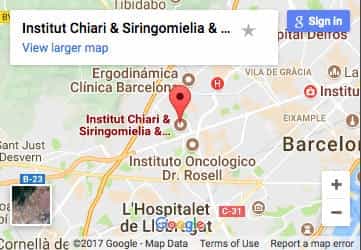
Thoracic Disc Herniation
Thoracic Disc Herniation
Last update: 25/09/2018, Dr. Miguel B. Royo Salvador, Medical Board number 10389. Neurosurgeon y Neurologist.
In spite of apparently having characteristics similar to those of lumbar disc herniation, the thoracic herniated disc is of special complexity since, according to the bibliography of some authors, there is a danger of 50% of spinal cord involvement in the surgical treatment. Therefore the surgical treatment for the thoracic disc herniation is the most dangerous one.
What makes surgery of the thoracic herniated disc especially dangerous is the existence of the spinal cord at this level, with a minimum of space to move, while in the case of the herniated lumbar disc, there is no spinal cord at this level as it ends at the height of T12-L1.
The thoracic disc herniation is not very frequent, due in part to the existence of the rib cage which functions as support, or a cast, and which unloads part of the burden that can be applied to the intervertebral thoracic discs. It is also infrequent because we rarely make physical efforts using the area of the thoracic vertebrae as a point of support.
The most frequent symptoms are due to the nerve root being affected at the thoracic level with radicular pain, and the spinal cord being affected, from this level with alterations in the motor and sensory pathways towards the lower extremities. The manifestation is in form of pain in the side from the back, tingling sensation in the torso, genitals or lower extremities, lack of strength and alterations of the tactile sensitivity in the lower extremities, alterations when urinating and defecating, alterations in sexual activity.
The criteria for the indication of surgery are the same as for the lumbar disc herniation:
- When the thoracic pain is so intense that it does not improve with medication, or the chronic pain becomes so limiting that one cannot lead a normal life.
- When the neurological examination reveals that there is a nerve, motor or sensitivity affectation, when there is a gait alteration, especially if it is progressive.
- When there are alterations with defecating or urinating.
As to the surgical technique, several approaches exist; some are designed to avoid getting close to the spinal cord, such as the lateral or anterior approach. Our team prefers the posterolateral approach, which is like a foraminotomy, or hole between the vertebral lamina, without moving the dura mater.



















